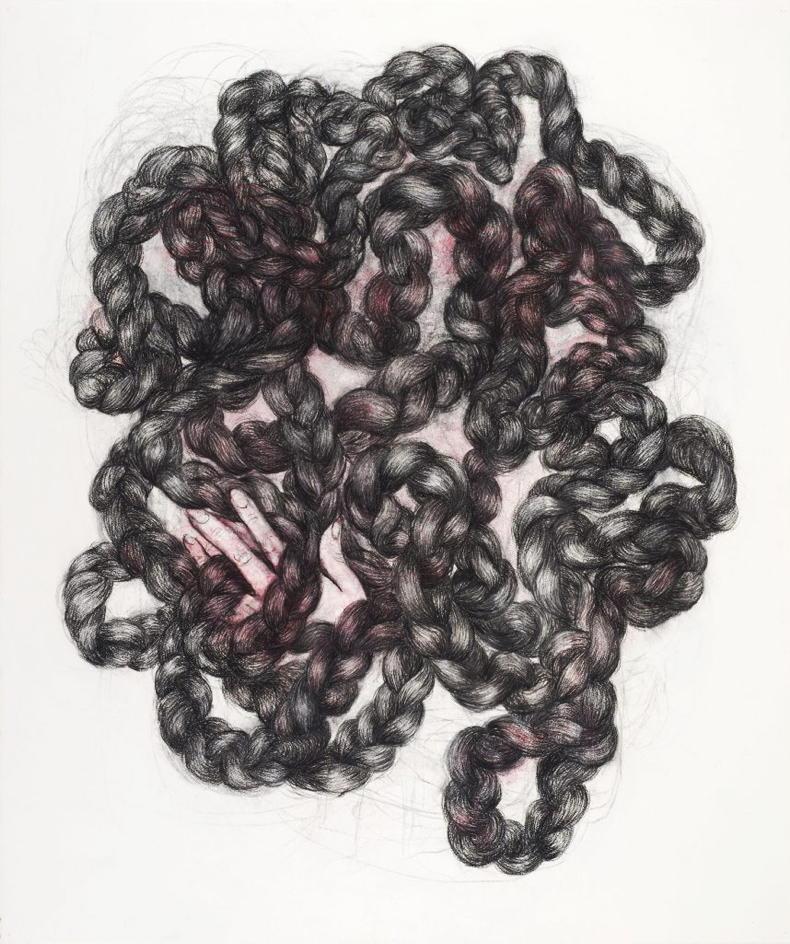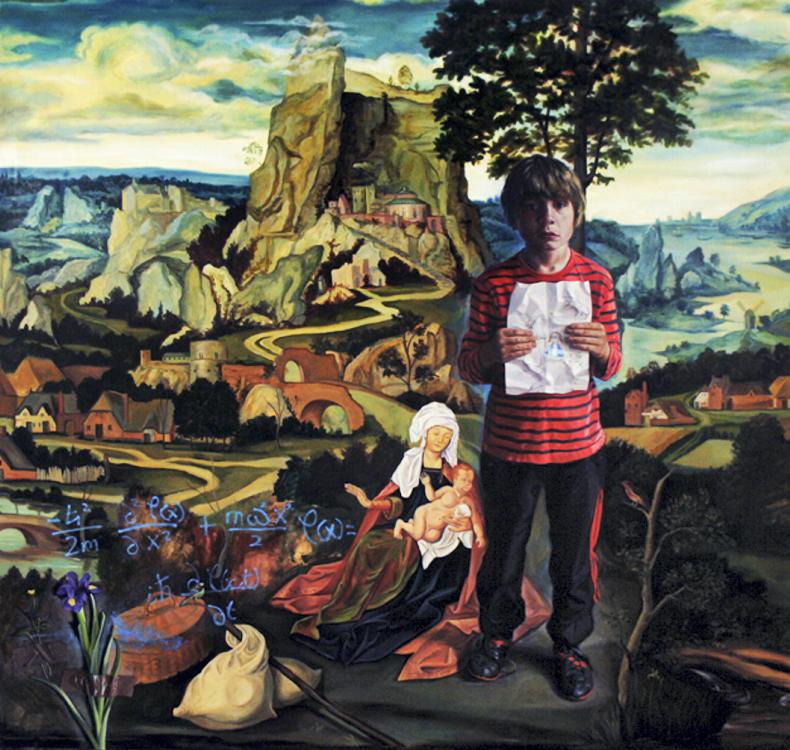Visitors during the summer and early autumn to Dublin could do nothing better than to devote a day to visiting two venues, situated within walking distance of each other. Not only that, but these great institutions have collaborated to present a very interesting exhibition, one that arguably should not be necessary.
Titled It Took a Century – Women Artists & the RHA, this show takes place in the National Gallery of Ireland, but tells the story of women’s membership of the Royal Hibernian Academy from the election a century ago, in 1923, of the first woman member, Sarah Purser, to the first woman president, Abigail O’Brien, just five years ago.
As part of the RHA’s bicentenary celebrations, the exhibition is right up to date with a presentation of work by current female members of the Academy, while also looking back on the past 100 years. How apt that the National Gallery of Ireland today has its first female director, Caroline Campbell, and how regrettable that it has taken so long for this to happen.
There have been 59 female members of the RHA, and each is represented by a work in the current exhibition. When an artist is elected to the RHA, it follows that they give a piece of their work to the Academy, and it is from this source that much of the art on show is drawn. While half of the artists represented in the exhibition are living, the other half span the decades from the 1920s.
There is much to love about this exhibition, which has been lovingly curated by Kate McBride and Dara McElligott, and men also had their part to play, thanks to the efforts of fellow curators, Drs Patrick Murphy and Brendan Rooney.

Alice Maher, Self-portrait, 2022
Variety
There is a great deal to see and appreciate among the works on show, and they also represent a variety of forms. Paintings, drawings, photographs and sculptures are all presented. There is also the inevitable political statement, with Aideen Barry refusing to have a work on show. Rather, she has a letter displayed which states her reason for declining the invitation to participate. She is unhappy with the National Gallery’s contract with a service provider which profits from direct provision.
Women have, historically, been underrepresented in art, and there even existed a body of thought that only men could be real artists. Thankfully, today we know better, and yet there is a need to put on shows such as this to remind the world that female artists are a force to be reckoned with, admired, and cherished. It is perhaps ironic that, alongside It Took a Century, the National Gallery is running another exhibition, celebrating the work of Lavinia Fontana.
First woman
A ground-breaking artist of the late sixteenth-century, Fontana is widely considered to be the first woman artist to achieve professional success beyond the confines of a court or a convent. She was the first woman to manage her own workshop, and the first woman to paint public altarpieces and female nudes. She maintained an active career, painting for many illustrious patrons, while also taking on the role of wife and mother. The present exhibition offers an insight into the cultural climate that enabled her to flourish as a female artist of the period.
A special mention for Fontana’s celebrated The Visit of the Queen of Sheba to King Solomon, from the National Gallery’s own collection. The recent conservation of this Renaissance masterpiece is a credit to the gallery. While the Fontana exhibition is a ticketed event, admission is free to It Took a Century.
Visitors during the summer and early autumn to Dublin could do nothing better than to devote a day to visiting two venues, situated within walking distance of each other. Not only that, but these great institutions have collaborated to present a very interesting exhibition, one that arguably should not be necessary.
Titled It Took a Century – Women Artists & the RHA, this show takes place in the National Gallery of Ireland, but tells the story of women’s membership of the Royal Hibernian Academy from the election a century ago, in 1923, of the first woman member, Sarah Purser, to the first woman president, Abigail O’Brien, just five years ago.
As part of the RHA’s bicentenary celebrations, the exhibition is right up to date with a presentation of work by current female members of the Academy, while also looking back on the past 100 years. How apt that the National Gallery of Ireland today has its first female director, Caroline Campbell, and how regrettable that it has taken so long for this to happen.
There have been 59 female members of the RHA, and each is represented by a work in the current exhibition. When an artist is elected to the RHA, it follows that they give a piece of their work to the Academy, and it is from this source that much of the art on show is drawn. While half of the artists represented in the exhibition are living, the other half span the decades from the 1920s.
There is much to love about this exhibition, which has been lovingly curated by Kate McBride and Dara McElligott, and men also had their part to play, thanks to the efforts of fellow curators, Drs Patrick Murphy and Brendan Rooney.

Alice Maher, Self-portrait, 2022
Variety
There is a great deal to see and appreciate among the works on show, and they also represent a variety of forms. Paintings, drawings, photographs and sculptures are all presented. There is also the inevitable political statement, with Aideen Barry refusing to have a work on show. Rather, she has a letter displayed which states her reason for declining the invitation to participate. She is unhappy with the National Gallery’s contract with a service provider which profits from direct provision.
Women have, historically, been underrepresented in art, and there even existed a body of thought that only men could be real artists. Thankfully, today we know better, and yet there is a need to put on shows such as this to remind the world that female artists are a force to be reckoned with, admired, and cherished. It is perhaps ironic that, alongside It Took a Century, the National Gallery is running another exhibition, celebrating the work of Lavinia Fontana.
First woman
A ground-breaking artist of the late sixteenth-century, Fontana is widely considered to be the first woman artist to achieve professional success beyond the confines of a court or a convent. She was the first woman to manage her own workshop, and the first woman to paint public altarpieces and female nudes. She maintained an active career, painting for many illustrious patrons, while also taking on the role of wife and mother. The present exhibition offers an insight into the cultural climate that enabled her to flourish as a female artist of the period.
A special mention for Fontana’s celebrated The Visit of the Queen of Sheba to King Solomon, from the National Gallery’s own collection. The recent conservation of this Renaissance masterpiece is a credit to the gallery. While the Fontana exhibition is a ticketed event, admission is free to It Took a Century.







 This is a subscriber-only article
This is a subscriber-only article










SHARING OPTIONS: